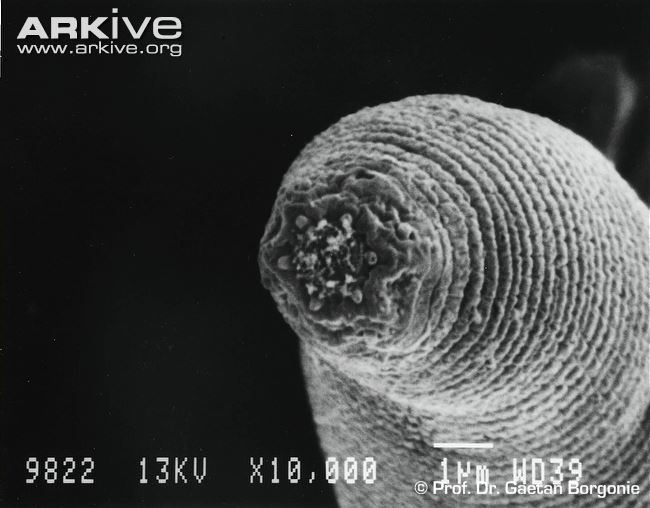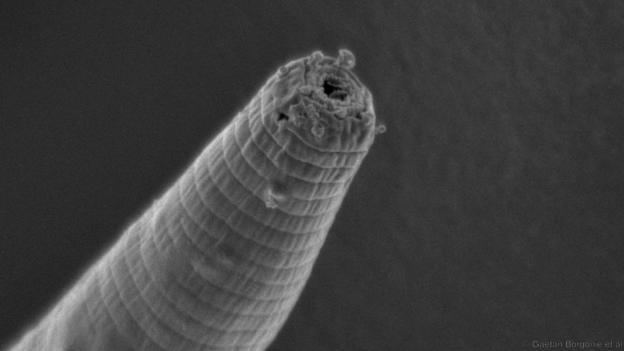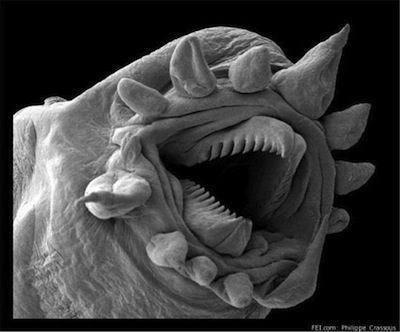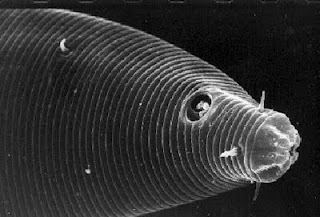Genus Halicephalobus Higher classification Halicephalobus | Phylum Nematoda Family Panagrolaimidae Scientific name Halicephalobus mephisto Rank Species | |
 | ||
Similar Tamoya ohboya, Roundworms, Kollasmosoma sentum, Bulbophyllum nocturnum, Meconopsis autumnalis | ||
Halicephalobus mephisto is a species of nematode, among a number of other roundworms, discovered by geoscientists Gaetan Borgonie and Tullis Onstott in 2011. It was detected in ore recovered from deep rock fracture water in several gold mines in South Africa 0.9 km (0.56 mi), 1.3 km (0.81 mi), and 3.6 km (2.2 mi) under the surface of the Earth. Onstott said that "it scared the life out of me when I first saw them moving", and explained that "they look like black little swirly things". The finding is significant because no other multicellular organism had ever been detected farther than 2 km (1.2 mi) below the Earth's surface.

Halicephalobus mephisto is resistant to high temperatures, it reproduces asexually, and feeds on subterranean bacteria. According to radiocarbon dating, these worms live in groundwater that is 3,000–12,000 years old. The worms are also able to survive in waters with extremely low levels of oxygen, lower than one percent of the level of most oceans. It is named after Mephistopheles, which means "he who loves not the light" and alludes to the fact it is found so deep under the Earth's surface.

It is the "deepest-living animal" ever found, able to withstand heat and crushing pressure, and the first multicellular organism found at deep subsurface levels. A previously known species found at similar depths in the same study was Plectus aquatilis. Borgonie said that the worm was similar to the detritus feeding species found on the surface, and probably descended from surface species. Such species are also able to survive extremes of temperature, and so, for Borgonie, the fact the first animal discovered at this depth was a worm was unsurprising. The team hypothesised that the species was descended from animals on the surface that were washed down the earth's crust by rainwater.

Halicephalobus mephisto worms measure from 0.5 to 0.56 mm in length. Though species in the genus Halicephalobus have few distinguishing features, H. mephisto can be differentiated from other species within its genus by its comparatively long tail, which is between 110 and 130 micrometres in length. It is closely related to H. gingivalis, but more closely related to certain unnamed species of the genus.


